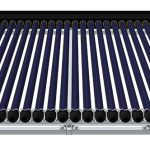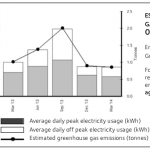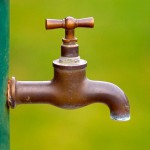Solar Hot Water Systems
Provided that a suitable area of close to North facing roof is available that receives good levels of sun without extensive shading solar hot water heaters represent on of the most efficient methods of heating water.
Historically flat plate collectors have been used but they’re more recently being replaced by evacuated tubes as the standard solar thermal collector.
Popular Australian brands include:
Retrofit solar collectors
Heat pump Hot Water Systems
Traditional electric hot water systems have used an electric element within the water tank to heat water. This is a relatively inefficient method of heating water which has been replaced by heat pump systems which use the difference in air temperature to heat the water.
Heat pumps are ideal where there is insufficient roof area or roof area with good solar access for mounting of a solar thermal collector. They also avoid the need to run plumbing of water pipes from a ground mounted tank up to the roof and back down again – making for a simpler installation.
It’s also becoming increasingly attractive to use all available roof area for solar PV panels which contribute to the creation of electricity used by a heat pump based hot water service. If the heat pump is set to run during the middle of the day you’re still effectively getting solar hot water.
New Heat Pump Hot Water Heaters
- Sanden
- Use a greenhouse friendly refridgerant (R744 vs the more commonly used R134a)
- Is significantly quieter than alternative heat pumps – it’s easy to not even notice it’s running. Rated at 38 dB vs 48 db more common on other systems.
Retrofit heat pump
- If you have an existing electric element hot water system that is in good working order Siddons can provide a bolt on heat pump to retrofit it.
Instantaneous Gas Hot Water Systems
As discussed natural gas is still a fossil fuel but one which is more efficient than electricity. The very large amounts of energy which can be released from gas very rapidly allow it to be used to heat water on demand. This has the added benefit that large volumes of water are no longer needed to be kept at high temperatures regardless of whether they’re required or not.
Additional efficiency measures & considerations
Having chosen your given method of hot water heating system there are further steps you can take to reduce the energy associated with your hot water heating.
- Your Home Technical Manual recommends turning your electric booster off on hot water systems when you go on holidays. You can do this via your metre box but alternately consider having a switch installed in a more convenient location.
- Where possible, wrap your hot water tank in additional insulation using a Hot Water Cylinder Blanket. They’re available from Autex.
- Ensure all external pipe work is insulated.
- e-Flex from Thermotec can be used to cover exposed pipe runs and can be retro-fitted.
- Valvecosy insulates the service valve whilst still providing access when required.
- Ensure all internal hot water pipes are insulated. A very cost effective option is to use swimming pool noodles available cheaply from reject shops over the swimming months.
- Hot water tanks are available in two varieties stainless steel and ceramic. The later makes use of a sacrificial anode to prevent corrosion. If this is not changed every 4-5 years the tank life can be materially shortened. If you’re not confident the anode will be changed throughout the life of the tank a stainless steel version may be a better option.






